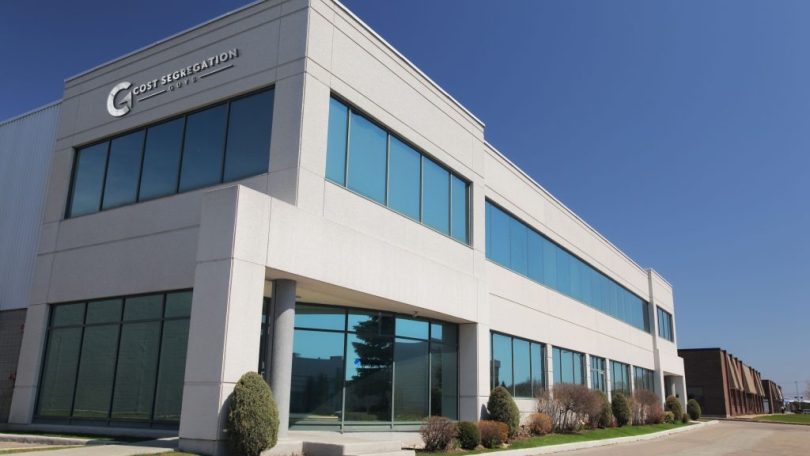If you’re a real estate investor wondering how much does a cost segregation study cost, you’re not alone. It’s one of the first questions savvy owners ask when they hear about accelerating depreciation and unlocking big first-year tax deductions. The quick answer is: it depends on your property, your goals, and the scope of the study. The smart answer is: focus on value, audit-readiness, and ROI.
If you want a fast, honest estimate tailored to your building (and a straight talk on payback), reach out to Cost Segregation Guys. They’ll price it transparently and show you the projected first-year tax savings for a cost segregation study of residential rental property so you can decide with confidence.
A 60-Second Refresher: What a Cost Segregation Study Does
A cost segregation (cost seg) study identifies and reclassifies components of your property into shorter-life asset classes, think finishes, specialty electrical, site work, and certain mechanical pieces, so you can depreciate them faster. The result is larger deductions up front, improved cash flow, and, for many owners, a dramatically reduced tax bill in the first year you place the property in service or do substantial improvements.
But not all studies are equal. Some are “desktop” or model-based estimates. Others are full engineering studies that involve site inspections, drawings, takeoffs, and robust workpapers designed to stand up under IRS scrutiny. Those differences, plus property size and complexity, drive the price more than anything else.
Core Factors That Drive Price
The cost of a study is determined by both scope (how thorough and defensible it is) and complexity (how challenging your property is to analyze). Here are the main levers:
- Property Type & Complexity
A simple single-tenant warehouse is cheaper to analyze than a high-end medical office, hotel, or mixed-use property with multiple systems and build-outs. Specialty spaces (labs, restaurants, manufacturing) often require deeper engineering time. - Size (Square Footage) & Basis
The larger the building and the higher your depreciable basis (purchase price minus land, plus qualifying improvements), the more line items there are to classify. Bigger scope generally means a higher fee—but also usually a bigger benefit. - Study Type & Methodology
- Model-Based/Estimate-Only: Lower fee; limited detail; usually not ideal if audit defense matters.
- Hybrid: Combines modeling with targeted engineering review; solid for many mid-market buildings.
- Full Engineering Study (with Site Visit): Highest fee; most detail; strongest audit footing and documentation.
- Model-Based/Estimate-Only: Lower fee; limited detail; usually not ideal if audit defense matters.
- Documentation Quality
Having architectural drawings, contractor pay apps, invoices, and cost breakdowns reduces the analyst’s detective work, which can lower fees and speed up delivery. - Timeline & Coordination
Rush jobs, after-hours access, or multi-property rollups (e.g., portfolio studies) can influence price, sometimes up or down depending on economies of scale. - Audit Defense & Guarantees
Some providers include written audit support (or even guarantee results); others charge for it. Including defense in the package adds value and peace of mind. - Travel & Site Logistics
For full engineering studies, travel to remote locations or multi-site days can affect the quote, though many firms, including Cost Segregation Guys, plan efficiently to keep costs predictable.
Typical Price Ranges (So You Can Budget Realistically)
Let’s put some ballpark numbers on the table. Final quotes depend on your specifics, but these ranges are common:
- Small residential rentals (1–4 units) or small offices/retail:
~$1,000–$3,500 for streamlined or hybrid studies. (Very tiny jobs may be lower; luxury finishes or complex improvements can push higher.) - Mid-size commercial (10,000–100,000 sq ft):
~$4,000–$15,000 for an engineering-backed hybrid or full study, depending on complexity, documentation, and whether a site visit is included. - Large/complex assets (hotels, hospitals, manufacturing, multi-building campuses):
~$15,000–$75,000+ for thorough engineering studies with extensive documentation and multi-day site work.
If your building is unique (historic rehab, specialized labs, ground-up hospitality with extensive FF&E) or if you’re bundling multiple properties, get a tailored quote. A good provider will scope the study to your risk profile and goals instead of forcing you into a one-size-fits-all package.
So, how much does a cost segregation study cost?
It depends on the seven pricing drivers above—but here’s the lens that matters more: payback. Owners rarely regret a well-documented study that pays for itself several times over in the first year.
The ROI Math: How to Know If the Fee Makes Sense
The financial test is simple: compare the fee with your first-year tax savings (boosted by bonus depreciation if available) and the time value of money.
Example (simplified):
- Depreciable basis (improvements, building minus land): $2,500,000
- Reclassifiable portion (common range 20–35%, conservative example 25%): $625,000 accelerated
- First-year extra depreciation (with bonus, rules permitting): up to a large portion of that $625,000 deducted immediately
- Tax rate (combined marginal): say 32% (varies by taxpayer)
- Tax savings estimate: If $400,000 of that is deductible in Year 1, your cash-tax reduction could be ~$128,000.
- Study fee: $8,000–$12,000 (typical for mid-size commercial)
- Payback: Often within weeks of filing; ROI frequently well over 10x.
This is why the right question is rarely just “What’s the cheapest provider?” It’s “Which provider will generate and defend the most benefit for my situation?” If an extra $2,000 in fees yields $50,000 more in defensible reclassifications (and clean workpapers that make your CPA’s life easier), that’s a bargain.
Pricing Models You’ll See (and How to Compare Them)
- Flat Fee by Property
Transparent and easy to budget. Good providers quote based on size, complexity, and documentation. Verify what’s included (site visit? audit defense? CPA coordination?). - Tiered by Square Footage
Useful for portfolios of similar buildings (e.g., multiple retail pads). Make sure tiers reflect reality; a 20k-sf medical build-out isn’t the same as a 20k-sf shell warehouse. - Performance-Aware Pricing (Rare, but Emerging)
Sometimes fees align with projected savings, within ethical and regulatory boundaries. If offered, ensure independence and that the methodology remains audit-defensible.
Whichever model you choose, insist on a scope letter: deliverables, methodology, support if examined, and timelines.
What You’re Really Buying
Think of a cost segregation study as documentation married to technical credibility:
- Detailed Engineering Workpapers (component breakdowns, class lives, photos, site notes)
- Clear Mapping to the tax code and IRS audit techniques
- Reconcile back to the total project costs and your fixed asset ledger
- CPA-Friendly Schedules (MACRS lives, placed-in-service dates)
- Support if taxing authorities ask questions in the future
Common Questions Owners Ask (and How to Answer Them)
Q: Can I use a desktop/model study to save money?
A: For small/simple properties and low risk tolerance, a streamlined approach might be fine. But as asset size and complexity rise, a site-based engineering study tends to identify more reclassifications and holds up better in an exam.
Q: Will the IRS accept this?
A: The IRS doesn’t “approve” studies in advance, but it has published audit technique guides that emphasize engineering-based methods. Choose a provider whose workpapers track those expectations.
Q: When should I do it?
A: Ideally, the year the property is placed in service or substantial improvements occur. But you can also apply a look-back (catch-up depreciation) via a Form 3115 without amending prior returns, making older properties fair game. Timing can affect both the fee and the benefit.
Q: Does land value matter?
A: Yes—only the depreciable basis (building/improvements) counts. Accurate land/building allocation is foundational to both fee estimates and savings projections.
Quick Checklist to Choose the Right Provider
- Ask for a pre-engagement savings estimate tied to your basis and property type.
- Confirm methodology (engineering-based? site visit?) and what’s included (audit support, CPA calls, revised asset schedules).
- Review a sample report for depth and clarity.
- Check experience with your property type (hospitality, healthcare, multifamily, industrial, etc.).
- Clarify timeline (coordination, fieldwork, draft report, final).
- Verify pricing transparency (no surprise add-ons).
Ways to Lower Your Fee Without Sacrificing Quality
- Provide clean documentation: drawings, contractor pay apps, invoices, and change orders.
- Bundle properties: economies of scale can reduce per-property pricing.
- Plan the site visit smartly: group multiple nearby assets on one trip.
- Scope-match to risk: a hybrid approach may be perfect for mid-market assets.
- Engage early: studies done alongside construction closeout are often smoother (and sometimes cheaper).
Mistakes That Make Studies More Expensive (or Less Valuable)
- Waiting until the last minute before filing—rush fees and fewer opportunities to refine.
- Choosing solely on price and getting thin reports that your CPA won’t rely on.
- Ignoring improvements—tenant build-outs and renovations can be gold mines for acceleration.
- Forgetting state impacts—state conformity varies; make sure your provider models both federal and state effects.
- Not coordinating with your CPA—misaligned fixed-asset processes lead to rework.
In Plain Numbers: How much does a cost segregation study cost for common property sizes?
For a basic sense: small rentals often fall around $1k–$3.5k; mid-size commercials around $4k–$15k; complex or large campuses $15k–$75k+. These are not hard ceilings—your quote should reflect complexity, documentation, travel, and audit-defense scope. The best providers (like Cost Segregation Guys) will map the fee to value and show you side-by-side ROI so you can green-light the study confidently.
What About Portfolio Owners?
If you own a dozen similar buildings, you can often secure portfolio pricing and a standardized template for workpapers—speeding delivery and easing your CPA’s burden. Providers can also prioritize assets by highest ROI first, so your initial batch funds subsequent studies from tax savings rather than out-of-pocket cash.
A Word on Risk and “Conservative vs. Aggressive”
A properly engineered study isn’t “aggressive”—it’s accurate. The job is to identify assets and components, tie them to authoritative class lives, document them, and reconcile totals. Where judgment calls exist (e.g., improvement categorization), a quality report explains the rationale with citations. Paying a little more for that rigor is often the cheapest form of insurance you can buy.
When a Study Might Not Be Worth It
- Very small basis after excluding land (e.g., under ~$200k), especially if documentation is weak.
- Properties with minimal reclassifiable components (e.g., extremely basic shells).
- Short hold periods where transaction costs and recapture dynamics erode benefit.
Even then, ask for a preliminary estimate—sometimes bonus depreciation or significant site work changes the math in your favor.
Bottom-line
When people Google how much does a cost segregation study cost, they often miss the bigger picture: fees are just one variable in a compelling ROI equation. For many real estate owners, a well-executed, audit-defensible study pays for itself many times over in the first year and strengthens cash flow right when you need it most.
Whether the cost of a cost segregation study is the question that brought you here, the answer is best delivered with numbers specific to your building and your tax profile. That’s exactly what Cost Segregation Guys provide: a clear, upfront quote, a conservative savings estimate, and a methodology your CPA (and the IRS) can understand.
Now that you know how much a cost segregation study costs, take a few minutes to share your property basics with Cost Segregation Guys, get a tailored estimate, see your projected tax savings, and decide with confidence.


